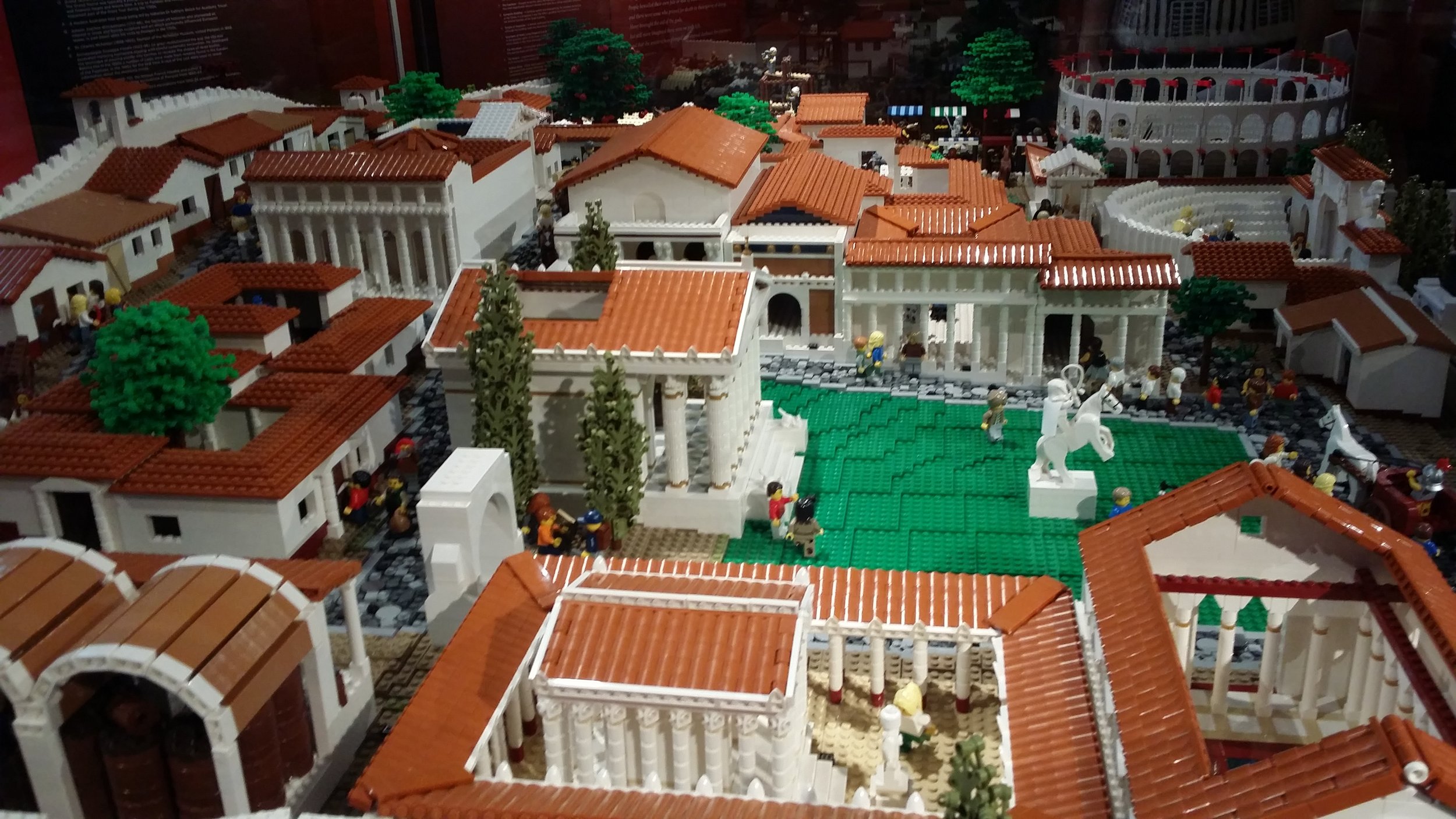LEGO Pompeii's blocky delight
The Chau Chak Wing Museum’s four-square-metre diorama is testament to the value of keeping history accessible, and above all, fun.
Image credit: Patrick McKenzie
Amid ancient relics and marble statues, the 190,000 plastic bricks of LEGO Pompeii are a striking centrepiece of the Chau Chak Wing Museum. The four-square-metre diorama took almost 500 hours of building and has delighted visitors since 2015. Its enduring popularity is testament to the value of keeping history accessible, and above all, fun.
Pompeii is not the only historical site to have been LEGO-fied at the University’s museums. In 2012, the Nicholson Museum commissioned three models of ancient sites to be built by LEGO Certified Professional Ryan ‘The Brickman’ McNaught in an effort to engage with younger audiences. Each model was to mix ancient and modern elements. Despite faint concerns that a LEGO exhibition might infantilize the collections or overshadow the other exhibits on offer, the idea was an immediate success. Rather than ignoring the rest of the museum, crowds took interest in authentic artefacts as well as the plastic bricks.
2012’s LEGO Colosseum later went on a world tour (but was tragically destroyed in a transit mishap two years ago), while 2013’s LEGO Acropolis enjoys a prestigious retirement in the Acropolis Museum in Athens. LEGO Pompeii, the final and largest model in the series (it was too large to fit through the doors of McNaught’s warehouse and had to be built in two parts), was moved to the new Chau Chak Wing Museum in 2020 along with the rest of the Nicholson Collection. It now occupies pride of place on the second floor as part of the Roman Spectres exhibition, curated by Candace Richards.
LEGO Pompeii was specifically made to be a teaching aid targeting older students as well as children by aligning with elements of the Ancient History HSC syllabus. Dr Craig Barker, Head of Public Engagement at the Chau Chak Wing Museum and LEGO Pompeii’s original curator, has even used it for teaching undergraduate archaeology units. The model captures life just before the eruption of Vesuvius in 79 AD, its archaeological history over 1,500 years later, and the role the city plays in modern popular culture.
Part of the model’s appeal is this mix of settings and characters, and the humorous style of its storytelling. Four-centimetre centurions rub plastic shoulders with Pink Floyd and a 13-year-old Mozart. The Doctor’s TARDIS sits in one courtyard while famed archaeologists uncover ruins and make plaster casts nearby. Sir Charles Nicholson himself can be seen on his visit to the city in 1858, as well as Indiana Jones, various filmmakers, statues and a subterranean cavern ominously filling with magma. Other features include the Temple of Jupiter, Stabian Baths and a rioting mob within Pompeii’s amphitheatre. It is bolstered by the display of authentic plaster fragments from Pompeii beside it, allowing the model to be not just “a novelty, but part of a broader examination of Rome,” says Barker.
Where is Darth Vader?
LEGO Pompeii’s most enduring mystery is the location of notable Dark Lord of the Sith, Darth Vader. Exhibition notes produced by the museum claim Vader can be found somewhere within the model, yet despite extensive searching, the Sith Lord remains elusive. McNaught is known for including Emperor Palpatine in his models as an in-joke, and he could be seen riding inside the popemobile in the LEGO Colosseum. There is indeed a figure near the Temple of Isis which resembles the Emperor, yet according to Richards’ annotations, this is Arbaces, the evil priest from the silent film The Last Days of Pompeii. Curiously, Richards also separately lists this same individual as representing Darth Vader himself, despite them lacking any resemblance beyond an affinity for black robes. Barker says he has “completely forgotten” the explanation for the discrepancy, so it seems it can only be that the museum staff have fallen victim to an old Jedi mind trick.
Model storytelling
A major advantage of museum models is their ability to visually represent a range of subjects and time periods. Models offer valuable spatial context to collections of artefacts and can make otherwise abstract information tangible. They can depict elements of everyday ancient society such as markets, graffiti and slavery that cannot otherwise be seen within the narrow confines of a museum’s walls. Engagement with museum-goers takes precedence over absolute historical accuracy.
Storytelling in physical form is often a crucial part of educational outreach as a result. As Barker pointed out in a 2015 article in Teaching History, there is nothing new about models in museums — in fact, they were once widespread. Cork and plaster models of ancient sites became hugely popular in the 18th and 19th centuries, but fell out of vogue in the 1960s, being seen as unworthy of the austere setting of a museum. In recent times, as public education within museums has become increasingly valued again, models have begun to make a comeback. LEGO Pompeii itself is innovative for its LEGO medium and the connection this provides with younger people in particular.
Fun can seem a stranger to the severe museum of the public imagination, but creative ways of preserving and retelling history, such as LEGO Pompeii, keep history alive for younger generations and promote new ways of thinking for older ones. Models, especially when built from a children’s toy, offer a unique means of communicating a fun and entertaining approach to history that is crucial to engaging the public and nurturing wider interest in historical inquiry. Ten years on from the University’s first LEGO model, LEGO Pompeii continues to delight.

